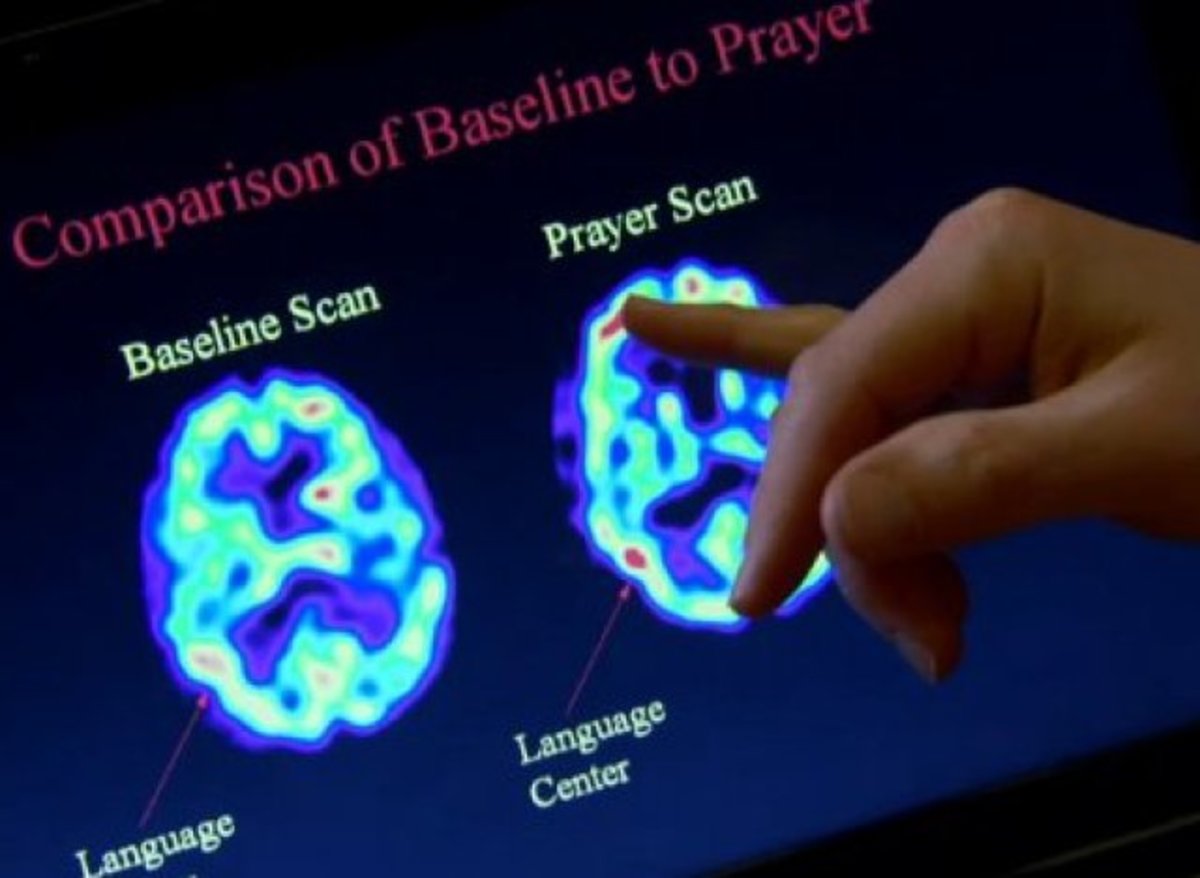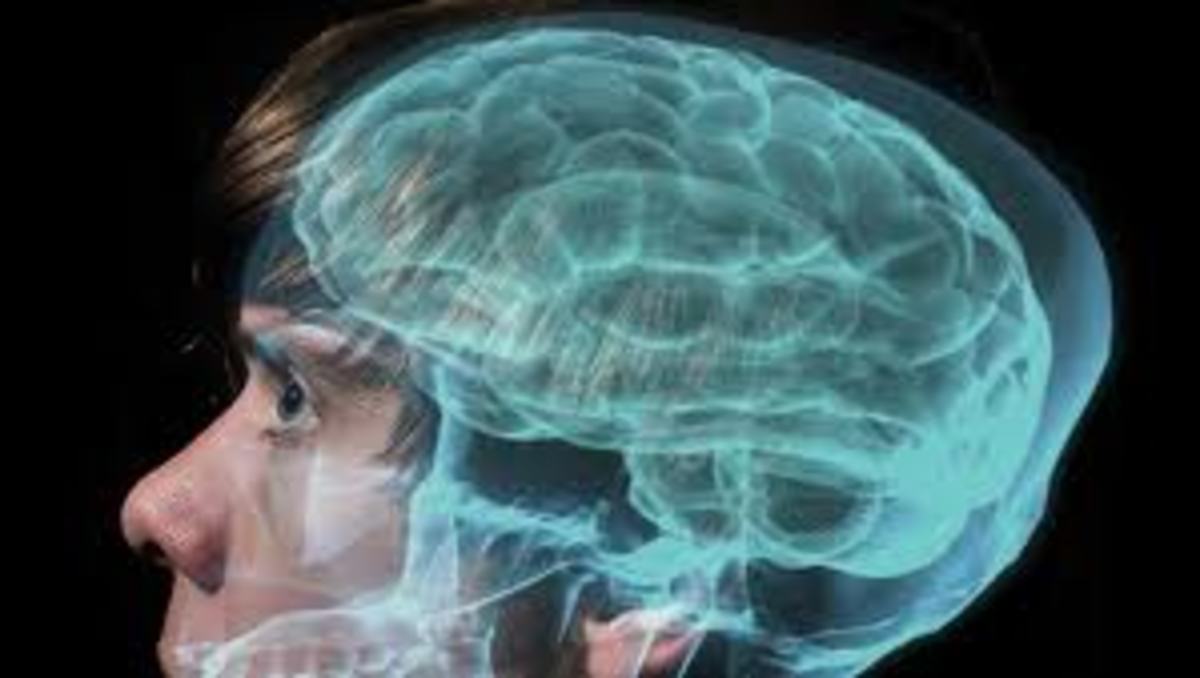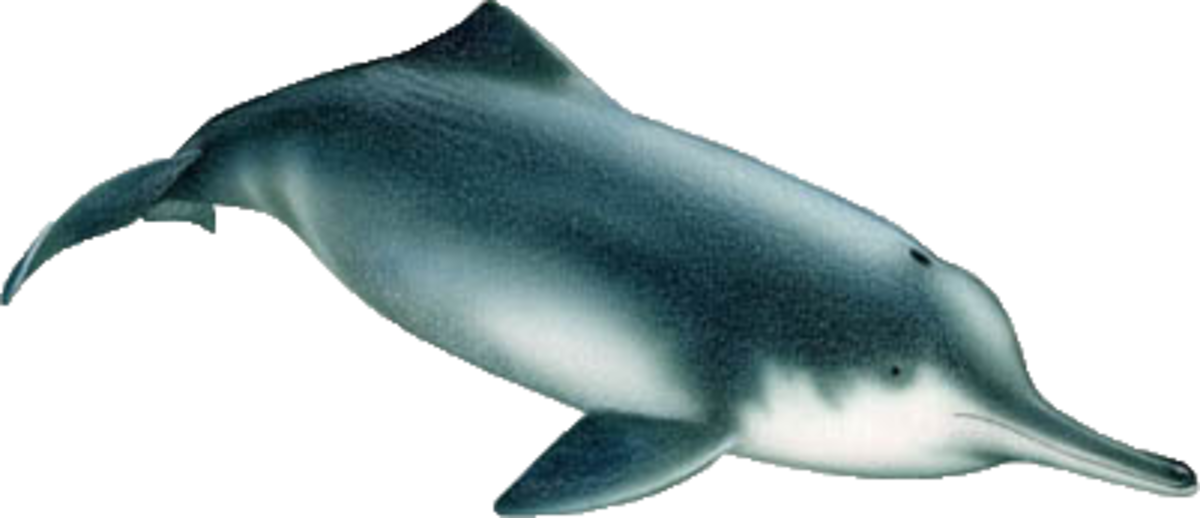Ghost in the Machine: The Robot that Makes People Feel They're Being Stalked by a Ghost
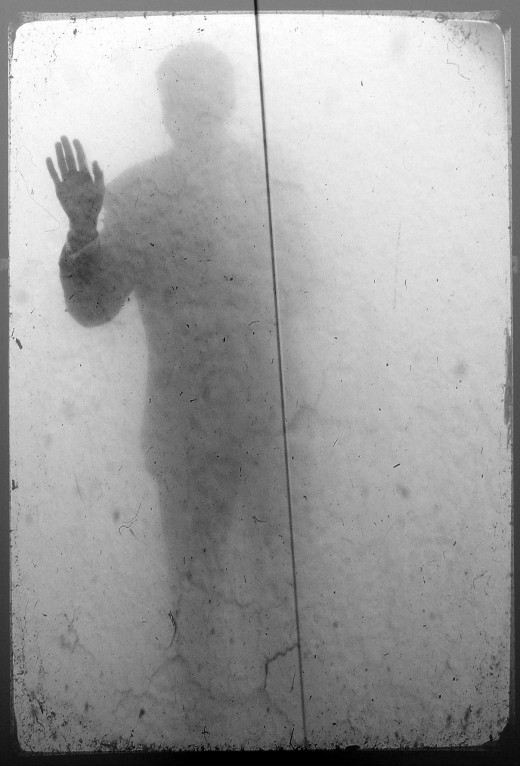
Have you ever been at home alone and got that sudden eerie feeling that you're no longer by yourself or that you're being watched?
You half expect that when you turn around you'll see a stranger standing in the shadows directly behind you, staring wide-eyed and grinning menacingly.
Or perhaps you feel that a glance towards the window won't reveal the usual sight of twinkling stars in the night sky, but instead a clear view of two intense bloodshot eyes glaring from the darkness, perhaps those of a crazed individual or sinister entity watching you through the glass (you can probably tell that I've had these thoughts and sensations way too often - my friends tell me I need help.)
When you actually turn around though you see that nobody's there and nothing is out of the ordinary, yet you still can't shake that feeling of an unseen or 'ghostly' presence near you.
This unnerving phenomenon was the subject of a report released this week by an international team of researchers from Switzerland, Japan and Israel.
"The sensation that somebody is nearby when no one is actually present is called 'the feeling of a presence," they explain.
"Although people do not see the 'presence,' they may describe its spatial location and frequently turn around or offer food to the invisible presence".
This recent study identifies the areas of the brain involved in creating this ghostly presence allowing the researchers to recreate the sensation with the use of a special robot within a laboratory setting.
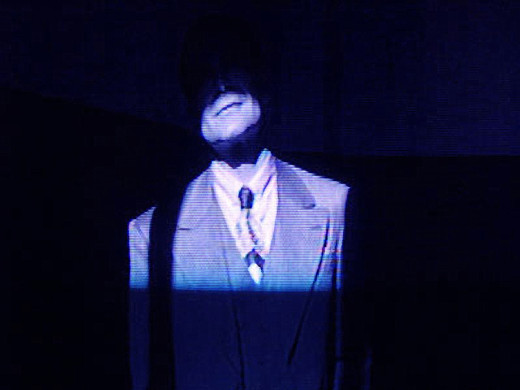
Hidden in Shadow: Sensing an Unseen Presence
In 2006 neurologist and co-author of this most recent report, Olaf Blanke was prepping an epilepsy patient for brain surgery by electrically stimulating areas of her brain to identify what needed to be preserved.
After shocking the brain's left temporoparietal junction, the patient suddenly claimed to sense someone standing behind her, even though this was not the case.
Despite the medical staff reassuring her that no dark shadow was looming behind her back, she could not be dissuaded, insisting that she was aware of the entity every time that same part of her brain received a shock.
Even though she couldn't see this mysterious individual, the patient was able to describe him/her: they were young but of an indeterminable gender and completely immobile, never speaking or moving, instead simply mimicking the patient's posture and position.
When she was instructed to change her position by lying down or sitting up holding her knees, the patient said that the she sensed the strange figure doing the same thing.
This led to Blanke and his colleagues suspecting that the patient was misplacing her sense of self by perceiving her own body as a separate and external entity.
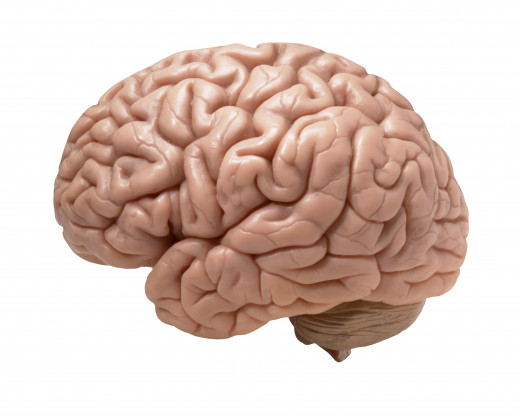
Ghosts on the Mind: Researchers Replicate Ghostly Presence in the Lab
Identifying the Source of The Ghostly Phenomenon
To identify the neural mechanisms responsible for this "feeling of presence" (FoP), the researchers behind this recent report conducted a lesion analysis on 12 individuals all who had previously experienced FoP sensations and were afflicted with epilepsy, strokes, migraines and other neurological and sensory-motor problems. This research was supported by an additional analysis into associated neurological deficits.
The research revealed that FoP experiences are an "illusory own-body perception" caused by one misperceiving the source and identity of sensorimotor (tactile, proprioceptive, and motor) signals from the body to the brain. This can lead to the brain mistaking one's own bodily movements as those of a nearby second individual.
''The feeling of a presence is the misattribution of signals in the brain,” lead researcher Dr. Giulio Rognini told Popular Science. “Their own signals are coming from the body, but they’re not properly integrated by the brain. So instead of the movements being properly attributed to themselves, they’re misattributed to another person.”
Their report linked this 'ghostly illusion' to damage in three regions of the brain: the temporoparietal junction, the insular and especially the frontoparietal cortex.
These three areas serve various different functions, but also affect a person's self-perception, consciousness, self-other distinctions, self awareness, proprioception (detecting the position and posture of the body and limb movement), comprehension of their surroundings and spatial positioning of the body within their immediate environment.
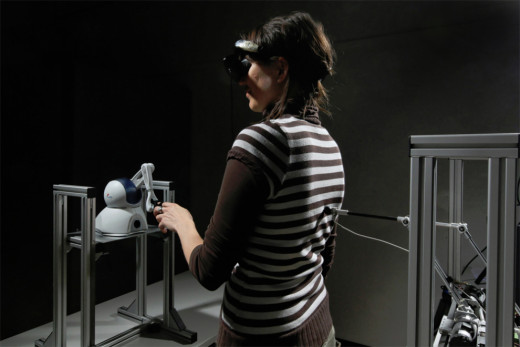
The Machine with a Ghostly Presence
The researchers were able to replicate this experience in healthy volunteers (who were not told the purpose behind the study) using a two-part robot consisting of "a master" component that was placed in front of each participant and "a slave" component that was located behind them.
Blindfolded volunteers were required to move the arm of the master robot with one hand. Meanwhile the slave mechanism touching their back mimicked its actions in perfect synchronicity.
When the participants pushed the master arm forward, the slave arm gave their back a sharp jab or poke, while also providing tactile feedback through their fingertips that made them feel as if they were stroking their own back while stretching their hand out in front of them. This created a sort of spatial discrepancy, as the brain couldn't explain how a person can touch their back while reaching forward. However as the movements between the master and the slave were synchronized, the healthy brain was able to adapt and correct for this discrepancy, leading to participants sensing nothing out of the ordinary.
This changed significantly though when a time delay of 500 milliseconds was implemented between the movement of the master and slave components, which more effectively distorted temporal and spatial perception for five of the 17 participants, who reported feeling a phantom presence behind them touching their back.
When the tactile feedback feature was disabled from the master arm, 14 of 19 participants reported an even stronger feeling of presence.
Those effected also reported feeling their bodies drift backwards in space towards the mysterious presence and some even reported suddenly sensing up to four apparitions in the room. For at least two participants the experience was so intensely unnerving that they asked for the experiment to stop.
"Several of them really did say the sensation was spooky and creepy, even though consciously they knew where the touching came from," Rognini told The Washington Post.
The researchers realized that the delay between participants moving their arms while controlling the master robot and the delayed poke from the slave robot had caused confusion and conflicting signals within the areas of the brain responsible for self awareness.
Disabling tactile feedback in the master arm prevented participants from feeling the poking sensation through their fingertips, causing the brain to further dissociate the participants' movements with the poke that they received in the back half a second later.
This mismatch between motor signals (i.e. initiating the poking motion) and sensory signals (i.e. receiving the poke later than expected and not being able to feel it in their fingers) confused the brain into believing that the poke that participants' finally received was actually caused by another person or invisible presence in the room, rather than a result of their own previous actions.
The research team say that their results suggest that when someone actually feels a ghostly, invisible presence around them, what's really happening is that the brain is getting confused and miscalculates the body's position, creating in that person's mind a second representation of their own body that they identify as belonging to a separate person.
"Our experiment induced the sensation of a foreign presence in the laboratory for the first time. It shows that it can arise under normal conditions, simply through conflicting sensory-motor signals," explains Blanke. "The robotic system mimics the sensations of some patients with mental disorders or of healthy individuals under extreme circumstances. This confirms that it is caused by an altered perception of their own bodies in the brain."
Scientists previously hypothesized that the people who claim to hear voices or feel that they are being controlled by other forces, maybe due to their brain failing to integrate bodily signals properly. The researchers behind this latest study hope that their findings can help scientists to further understand the hallucinations of patients with schizophrenia and other conditions.
They're now planning to continue their study with an MRI-equipped robot system that can monitor activity in healthy people’s brains when they sense a ghostly presence.
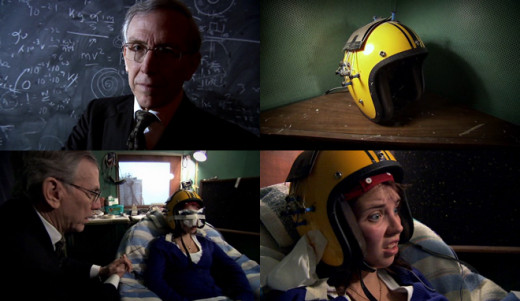
The God Helmet
Arguably the most well known experiments on the FoP experience have involved the use of what has been dubbed 'The God Helmet'.
Developed by scientists Stanley Koren and Michael Persinger, the headwear is a snowmobile helmet modified with solenoids and coils capable of producing an electromagnetic field to stimulate areas in the brain's temporal lobes, distorting brain signals and making test subjects sense the presence of another individual in the room.
Some reports claim that up to 80% of volunteers reported 'a religious experience', suddenly sensing the presence of various entities, such as God, angels, the Devil, demons, spirits or aliens. Some have also reported having an out-of-body experience (where some one feels that they've left their own body and are even to see themselves from a bird-eye-view).
The 'God Helmet' has received mixed reviews from the scientific community who have expressed skepticism over Persinger's scientific theory and methods. This was especially the case after an independent study attempting to replicate the experiment's methodology failed to achieve the same outcome.
The head researcher Pehr Granqvist reported that the magnetic field had no effect on inducing mystical or religious experiences and that these sensations were more likely due to participant's suggestibility, traits and personal beliefs.
This skepticism hasn't stopped commercial retailers from offering products promised to facilitate the same intense spiritual experiences.
Skeptic Michael Shermer Experiences 'The God Helmet'
The God Helmet (Documentary)
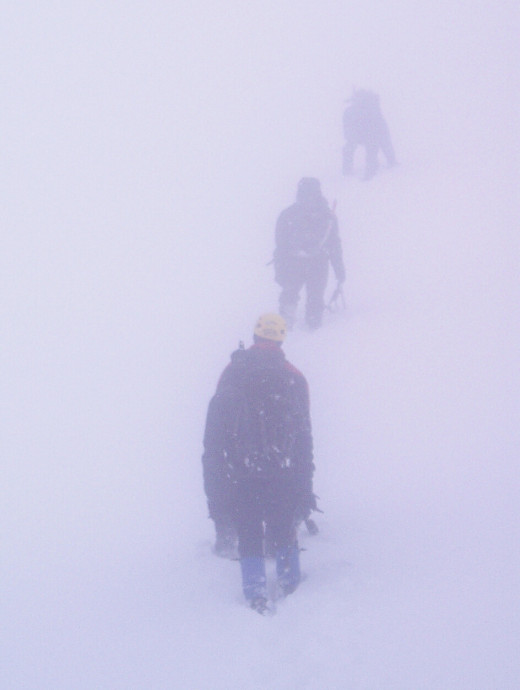
The Third Man Factor: Experiences with a Ghostly Companion
Previous research has provided some incite into the cause of a number of 'own-body illusions', including body-swapping, in which somebody changes their point-of-view with another person or even with a mannequin; and out-of-body experiences.
The 'feeling of presence' covered in the recent study is somewhat comparable to a strange phenomenon known as The Third Man Factor (TMF) in which people feel an incorporeal being in their company.
While those susceptible to the 'feeling of presence' generally sense an unnerving, sinister, spooky or ambiguous presence, The Third Man differs in that it is almost always a comforting, encouraging and even life saving entity that can often be both seen and heard.
Experienced by many mountaineers, explorers, adventurers athletes and people facing traumatic events, some people even consider the enigmatic Third Man as proof of Guardian Angels.
The most famous account was that of explorer Ernest Shackleton. In 1916 he and his companions, Frank Worsley and Tom Crean, faced certain death after their ship, The Endurance, became icebound. However they defied odds and survived by crossing the harsh wilderness of South Georgia on foot and reaching a Norwegian whaling station. All three men later retold how during their fight for survival they felt the presence of a fourth invisible companion.
This experience was the inspiration behind poet T.S. Eliot's famous Wasteland, in which he writes "who is the third who walks always beside you? When I count there are only you and I together, but when I look up the white road, there is always another walking beside you'.
Eliot had used some artistic license in altering the number of people on the expedition from three to two, therefore making the mysterious companion 'the third man' - a name that stuck as this is where the phenomenon gets its name from.
In 1927, aviator Charles Lindbergh struggled to remain awake for 33.5 hours straight while on his first solo non-stop trans-Atlantic flight from New York to Paris. Growing ever exhausted, at the 22nd hour Lindbergh suddenly realized that he had company, seated in the fuselage of The Spirit of St Louis. He recalled that these ghostly apparitions were vaguely outlined, transparent, friendly and familiar.
Lindbergh explained that he felt that they were there to help "conversing and advising on my flight, discussing problems of my navigation, reassuring me, giving me messages of importance unattainable in ordinary life".
British explorer Frank Smythe recounted that on June 1 1933, while on the British Everest Expedition, he stopped to share a piece of Kendal mint cake with a companion. The only problem was that at this point all members of his party had turned back leaving him entirely alone and offering cake to nobody - a realization that shocked him as the presence of the other person had been so strong.
According to Smythe the entire time he was climbing alone, he felt that he was accompanied by this second person, and that this companionship made him feel protected from harm and completely eliminated any sense of loneliness he may have had otherwise.
Famed Italian mountaineer Reinhold Messner, who made the first solo ascent up Mount Everest, says that during his first major expedition on Nanga Parbat (the World's ninth highest mountain) in 1970 he experienced a mysterious individual climbing next to him, yet just a little out of his field of vision. Messner later described the Third Man as something that "leads you out of the impossible".
It could be said that this description from Messner was particularly true for Ron di Francesco, the last person to escape the Southern Tower of the World Trade Center on 9/11 before it collapsed, who attributed his survival to a mysterious entity that guided his semi-conscious body to safety.
After being hit by an avalanche in 1983, mountaineer James Sevigny escaped death after following instructions from disembodied voice over his right shoulder (see the video below to hear his story).
Explorers Robert Swan, Peter Hillary and Ann Bancroft on separate expeditions through Antarctica to the South Pole, all experienced pain, fatigue, deprivation and a The Third Man encounter. For Hillary it was his deceased mother looking out for him. For Bancroft it was her grandmother, a mentor egging her on and encouraging her to continue. For Swan it was a mysterious third comforting and laughing companion who he perceived as the late explorer, Robert Falcon Scott.
There are countless other reports of people experiencing this phantom presence so it's impossible to cover them all, though a common details it that the The Third Man always seems to offer comfort or assistance.
Author John Geiger, who has become something of an authority on research regarding The Third Man, has identified a number of factors and conditions associated with the phenomenon: monotony, darkness, barren landscapes, isolation, cold, injury, dehydration, hunger, fatigue and fear.
While there's no consensus on what the Third Man is, theories suggest that it may be an illusion triggered by the brain during moments of sensory or oxygen deprivation, boredom or fatigue. Some of course see it as divine intervention or the presence of a guardian angel while others believe that it may be a survival or coping mechanism created by the brain to help people through moments of intense physical and emotional strain.
What ever the reason behind these experiences, its likely that most people, when in peril, would welcome the life altering and comforting companionship of the enigmatic Third Man.
Interview with Author John Geiger on The Third Man Factor
James Sevigny Discusses His Experience with The Third Man
Bibliography
- Ananthaswamy, A. 'Ever felt a ghostly presence? Now we know why', New Scientist, November 6 2014
- Arzy, S. 'Induction of an illusory shadow person', Nature 443, 287 (21 September 2006)
- Blake, J. 'Near death, aided by ghostly companion', CNN, November 8 2009.
- Blanke, O et al. 'Neurological and Robot-Controlled Induction of an Apparition'
- Brouet, A. 'Neuroscientists awaken ghosts… hidden in our cortex', EPFL News Medicacom, November 6 2014.
- Chalmers, S. 'The Third Man Factor: How those in dire peril have felt a sudden presence at their side, inspiring them to survive', Daily Mail, July 4 2009.
- Clark, K.J. 'Religion and the Sciences of Origins: Historical and Contemporary Discussions', New York, USA; Palgrave MacMillan, 2014. Chapter 8.
- Edmonds, M. 'Is the brain hardwired for religion', How Stuff Works, (Accessed November 2014).
- 'Guardian Angels Or The 'Third Man Factor'?', NPR, September 13, 2009
- Geiger, J. 'The Third Man Factor: Surviving the Impossible', New York, USA; Weinstein Books, 2010.
- Gholipour, B. 'Ghost Illusion Created in Lab with New Robot', Live Science, November 06, 2014
- Grush, L. 'This Robot Can Make You Feel There's a Ghost Behind You', Popular Science, November 7 2014.
- McGregor, A. 'An adventurer's guardian angel: the third man', Australian Geographic, September 12 2012.
- Miller, G. 'This Robot Makes People Experience a Ghostly Presence', Wired, November 6 2014.
- Nuwer, R. 'Scientists Figured Out How to Make People "Feel" an Otherworldly Presence', Smithsonian, November 7 2014.
- Porter, L. 'Mystery of the third man', The Age, June 28 2009.
- Ruttan LA, Persinger M & Koren S. 'Enhancement of Temporal Lobe-Related Experiences During Brief Exposures to Milligauss Intensity Extremely Low Frequency Magnetic Fields', Electromagnetic Biology and Medicine, Volume 9 (1) – Jan 1, 1990
- Shermer, M. 'The Sensed-Presence Effect', The Scientific American, Mar 1, 2010.
- 'The God Helmet', The Skeptic's Dictionary. (Accessed in November 2014)
- 'This robot makes you feel like a 'ghost' is in the room', Cell Press News, November 6, 2014.
- Yong, E. 'It's Behind You! Robot Creates Feeling of Ghostly Presence', National Geographic, November 6 2014.
- Yong, E. 'The Quantum Leap Effect - creating a body-swapping experience', National Geographic, December 2, 2008
- You, J. 'Robot makes people feel like a ghost is nearby', Science Magazine, November 6 2014.

